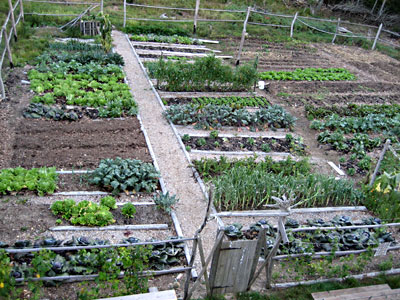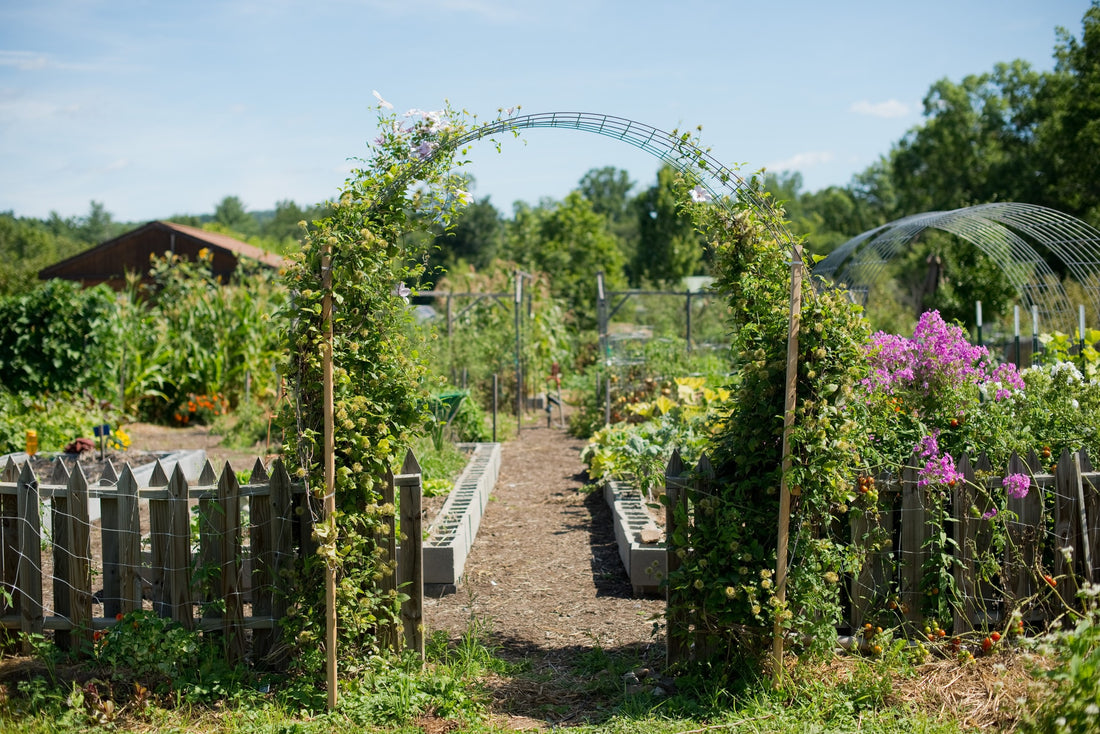Proven Strategies for Homestead Gardening
Proven Strategies for Homestead Gardening
Blog Article
Discover the Secrets to Producing a Effective and gorgeous Horticulture Space
Creating a stunning and efficient horticulture room is not merely an issue of growing blossoms and veggies; it calls for a tactical technique that incorporates numerous crucial elements. From selecting the right place based on sunshine and dirt kind to attentively developing your design and picking ideal plants, each decision plays a critical duty in the success of your garden.
Choosing the Right Area
Picking the suitable place for your garden is crucial to its success and total aesthetic allure. The very first step in this procedure includes assessing sunshine exposure, as a lot of plants require at the very least six hours of straight sunlight daily (Homestead Gardening). A south-facing yard generally obtains the most light, while shaded locations can hinder development and flowering
In addition, consider dirt quality and drain. Well-draining soil is important to prevent water logged origins, which can result in plant conditions. Conducting a dirt examination can offer beneficial information relating to pH levels and nutrition web content, enabling you to change the dirt appropriately.
In addition, distance to water resources is an additional element to evaluate - Homestead Gardening. Having very easy access to a pipe or watering system can simplify the watering process and motivate regular plant care. Wind protection is likewise important; positioning your yard near frameworks, such as fences or walls, can shield it from extreme winds that may harm fragile plants
Lastly, think about availability for upkeep and harvesting. A well-placed garden permits for hassle-free access, making sure that you can conveniently often tend to your plants without creating undue tension or disturbance. Thoughtful area option lays the structure for a thriving garden.
Selecting Plants Carefully
When selecting plants for your garden, it's vital to think about aspects such as environment, dirt problems, and personal preferences to guarantee a harmonious and productive room. A comprehensive understanding of your regional climate will certainly guide you in picking plants that thrive in your details setting. Selecting drought-resistant ranges is useful in arid regions, while moisture-loving species might be more ideal for locations with high rainfall.
Dirt problems are equally crucial; performing a dirt test can reveal pH degrees and nutrition content, enabling you to choose plants that will certainly prosper. Indigenous plants are typically an outstanding selection, as they are commonly well-adapted to regional dirt types and require much less maintenance.
Reflect on your personal preferences-- choosing plants that reverberate with your aesthetic tastes will improve your enjoyment and commitment to preserving your garden. By thoroughly examining these factors, you can create a thriving and diverse plant choice that raises your horticulture experience.
Creating Your Yard Format
With a thoughtfully chosen plant selection in hand, the next step is to produce a yard design that takes full advantage of both elegance and functionality. Begin by assessing the available area, thinking about aspects such as wind, sunshine, and color patterns. A tactical format should incorporate various zones, consisting of areas for planting, pathways, and possibly seating.
Start with larger plants or focal points, such as trees or high perennials, put tactically to produce visual passion. Layer smaller sized plants ahead to boost depth and structure. Think about the growth habits of your picked plants; taller selections must be positioned at the back or center of beds, while much shorter ones can line the edges.
Incorporating paths not only assists in access for maintenance yet likewise invites expedition. Usage materials that enhance the yard's overall visual, whether crushed rock, stone, or wood chips.
In addition, consider seasonal adjustments and exactly how your layout will certainly look throughout the year. Integrating evergreens alongside seasonal blossoms can guarantee year-round elegance. Eventually, a well-designed yard layout integrates the natural elegance of plants with functional considerations, leading to a space that is both welcoming look at here and efficient.
Enhancing Dirt Health And Wellness

To boost soil health and wellness, start by conducting a dirt examination to evaluate pH degrees, nutrient material, and dirt texture. This will educate your amendments. Integrate raw material such as compost, well-rotted manure, or leaf page mold and mildew to improve soil structure, water retention, and microbial task. In addition, practicing crop turning can prevent nutrition exhaustion and lower pest and illness stress.
Mulching is an additional reliable method; it not just preserves dampness yet also suppresses weeds and gradually enriches the soil as it breaks down. Avoiding excessive tillage is vital, as it can interfere with dirt framework and damage valuable microorganisms. Rather, embrace no-till or very little tillage practices to maintain dirt honesty.

Maintaining Your Garden Efficiently
A well-kept yard is a resource of pride and efficiency, needing consistent attention to guarantee that plants flourish and the landscape remains welcoming. Reliable yard maintenance involves several key techniques that boost the health and wellness of your plants and the general aesthetic of your room.
Normal watering is crucial; nonetheless, it is very important to customize your watering routine based on the specific demands of your plants and neighborhood climate conditions. Mulching can aid maintain wetness, suppress weeds, and manage dirt temperature. Additionally, prompt weeding stops competition for nutrients and sources, making sure that your plants grow.
Pruning is another crucial task. It encourages healthy and balanced growth, gets rid of dead or unhealthy branches, and shapes plants to keep an attractive framework. Furthermore, keeping track of for parasites and illness is vital; early discovery and intervention can save your plants from substantial damage.
Fertilizing should be implemented thoughtfully, utilizing natural options whenever feasible to advertise long-lasting dirt health. Seasonal view publisher site tasks such as planting, separating perennials, and preparing for winter will certainly guarantee your garden remains lively year-round. By adhering to these practices carefully, you can grow a yard that is both effective and beautiful.
Final Thought
Choosing a suitable location with adequate sunshine, picking appropriate plants, developing an aesthetically pleasing format, boosting soil health, and ensuring normal maintenance are important components. By incorporating these methods, one can cultivate a growing garden that not only boosts the landscape however also advertises environmental balance and sustainability.
From selecting the right area based on sunlight and dirt kind to thoughtfully making your design and choosing ideal plants, each decision plays a pivotal duty in the success of your yard. Well-draining dirt is necessary to avoid water logged roots, which can lead to plant conditions.When choosing plants for your yard, it's vital to consider aspects such as climate, dirt conditions, and individual choices to make sure a productive and harmonious room. Ultimately, a properly designed garden design integrates the natural elegance of plants with useful factors to consider, resulting in a space that is both inviting and effective.

Report this page